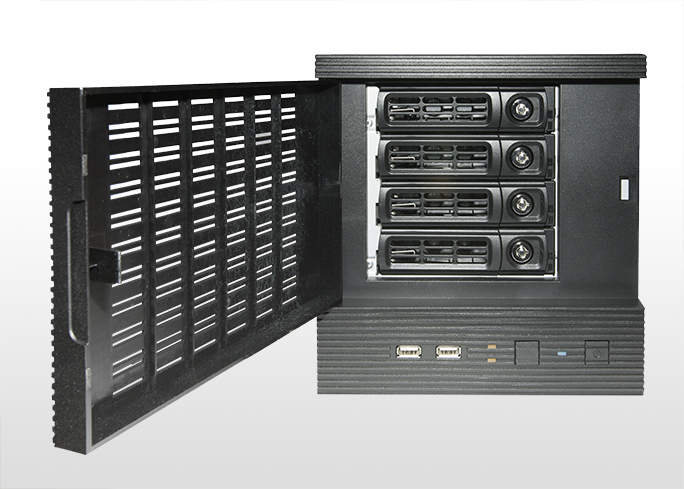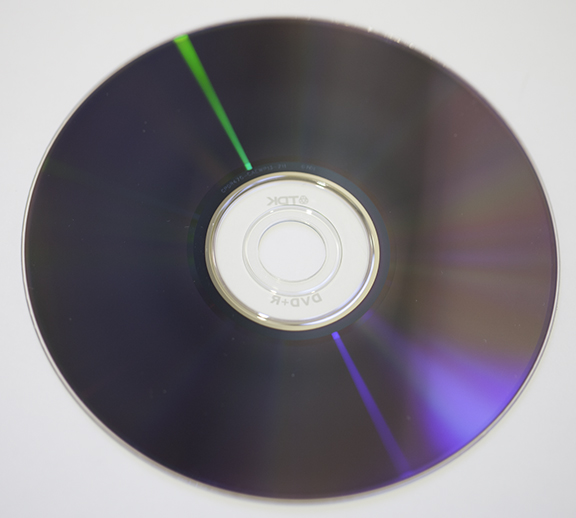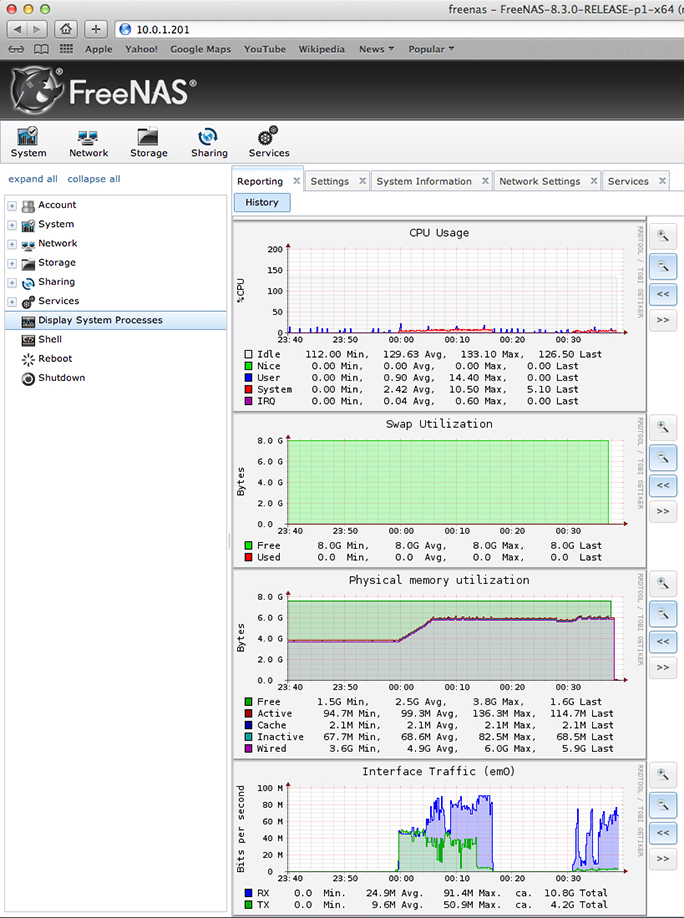I want to be able to store my entire archive on one hard drive so that I can have instantaneous access to all of my files.
As I mentioned in my last blog, I decided to build my own NAS server from parts I ordered online. Once it was finished, my friend Eric Johnson loaded the open source FreeNAS operating system on it, and configured it to work as a single RAIDz drive with 16 TB of native space. After the formatting process, I am left with 11.73 TB of usable space. Where did the other 5.3 TB go? It is used to store information about the information stored on the four internal drives so that the RAIDz system can reconstruct one in the event of a failure.
Here is the new NAS server with its front door open. The four drive bays are hot-swappable. Each one holds a 4TB drive. This is a lot of storage!
The process of moving gigabytes of data from DVD discs to my new NAS server is going reasonably smoothly. I am copying files one disc at a time from my archive to the NAS, and it takes about 10-12 minutes for each disc – about 4.7 GB each.
As I go I am encountering discs and files on various discs that won’t read. This was the reason that I built the server in the first place. These discs have visible fading on the data side – loss of dye coloration. I’m trying to be optimistic about this, as I have many file duplicates, and the likelihood of another copy of these files is pretty high. But, in the end I am sure that I will have several (or many) discs that won’t read at all.
To understand how dye fading affects discs one must understand how CDs and DVDs are made and written. The top surface of an writable optical disc is a reflective surface of aluminum or gold (yes, it’s real gold). Immediately under that reflective layer is a dye layer, made up of a colored dye that can be altered by the beam of a laser. In the “red book” specification, that dye is described as being photosensitive, altered by a laser in the near-infrared range (DVDs use blue lasers).
Most plastic CD and DVD cases are made of black styrene on the bottom, with clear on the top. This helps to keep ambient white light out of the case on the bottom, which is the writable side. One of my most seriously damaged discs was stored in a clear styrene plastic case, allowing sunlight in, and over time, allowing that light to alter the dye and make it unreadable. This was disastrous for the data stored on the disc. I will never get it back, whatever it was.
This is one of my failed DVDs. Notice the lighter area on the right side. This is sun-bleached dye; it no longer contains any data. The entire disc is lost.
I’m glad I built my storage server, and I am glad I am finally getting these files off the optical discs and back onto magnetic drives (I never thought I would say that about magnetic disks). With RAIDz I am at least protected from a single drive failure.
You may be wondering why I chose to use a local storage server instead of using “the cloud.” The answer is that the cloud, no matter how fast, is way too slow for me. I signed up for a 30-day trial account with one service that provides cloud back-ups, and it took so long to upload one of my DVDs, that I figured it would take me more than a year, working every day, to upload my files to the service. After uploading just one disc, I gave up.
I’m still reading the features documentation for FreeNAS, but so far I am impressed with its tools and controls. Mine is on a unsecured local network with just two users, but if I were in an enterprise environment, there are security features that compare with any operating system. There are also alarms and controls to ensure the integrity of the data written to the RAID array.
This is the chart page on my FreeNAS server control panel. All of the activities of the NAS system are reflected in these charts.
FreeNAS is controlled by a browser interface, accessed from any machine on the network. It has pages of controls, and a page of performance charts to indicate how well the system is running. I have not learned everything about the system yet, but I will continue to learn as I move more of my files to it. This is not very exciting, but it is very interesting to me, and I hope it’s helpful in allowing me to meet my goal of getting my archive online.




